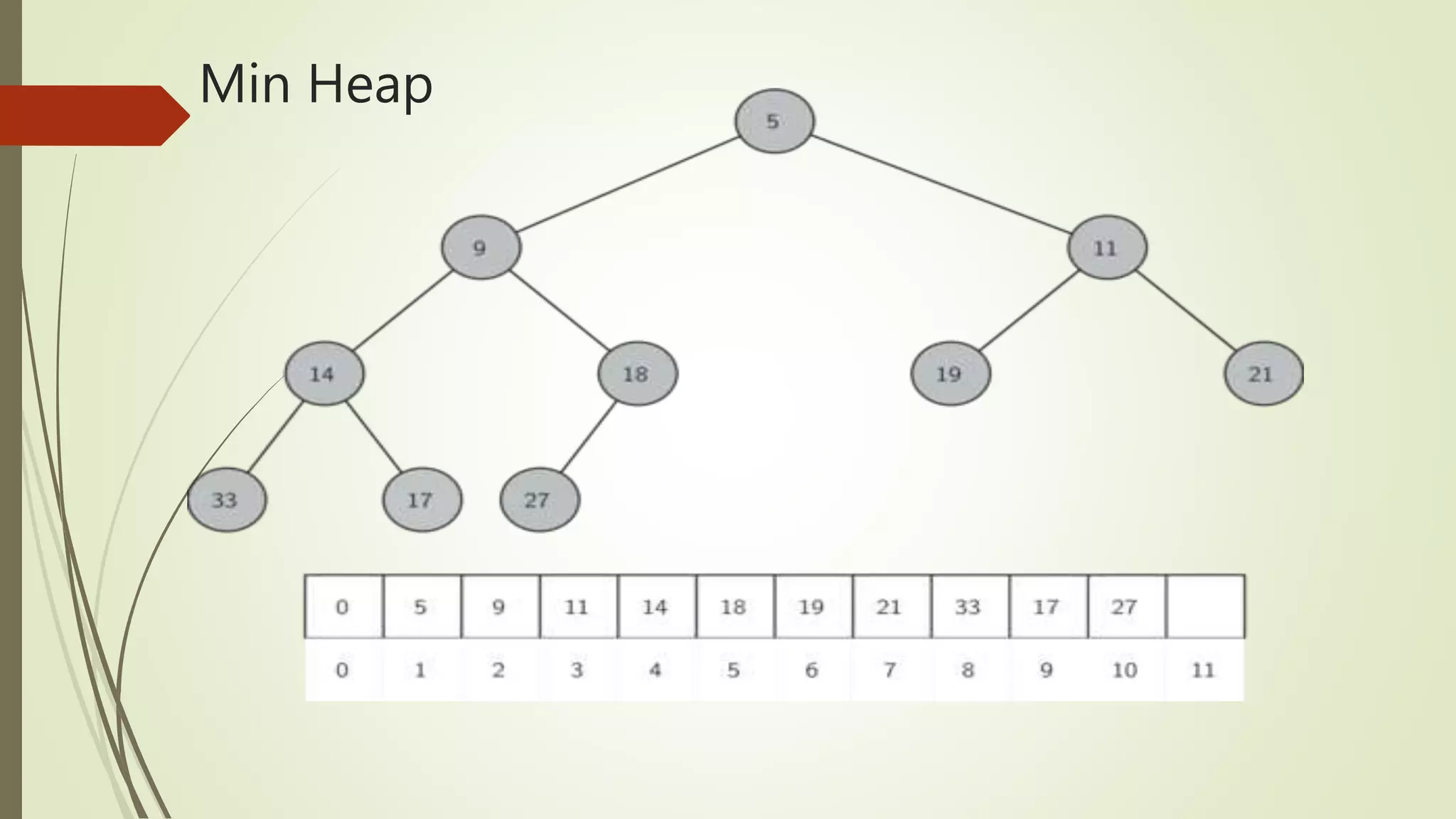A heap is a special complete binary tree where each node's key value is constrained by its children, categorized into max-heaps and min-heaps. It is typically represented as an array where specific index relationships define parent and child nodes. Heaps are utilized in operations like heapsort, finding extremes in data, and implementing priority queues efficiently.




![ How is Heap represented? A Heap is a Complete Binary Tree. A heap is typically represented as array. Representation of Heap: The root element will be at Arr[0]. Below table shows indexes of other nodes for the ith node, i.e., Arr[i]: Arr[i/2] Returns the parent node Arr[(2*i)+1] Returns the left child node Arr[(2*i)+2] Returns the right child node](https://image.slidesharecdn.com/heaps-170412121507/75/Binary-Heap-Tree-Data-Structure-5-2048.jpg)




